The Apple Festival was easily the biggest event in the Huon Valley in its day – and even to this day. When there was much less ownership of cars, 20,000 people might pour into Cygnet for the final day and the naming of the Apple Queen.
When the annual festival started in 1952, about 2500 people lived in the Cygnet area – and 1500 of them were actively involved in setting up and running the festival.
“Everything stopped for it, there would have been very few people at home,” said former Apple Queen Diana Clark (Miss Gorringe when she won in 1958).
In 1956, 30 traffic police were on duty to control traffic and marshal it into 6 hectares of parking space.
I moved to the Huon Valley well after the last Apple Festival in 1964, and had always assumed it was held in apple blossom time, when things were quieter in the orchards.
But not so, the Apple Festival was held in March. Most of the population of Cygnet threw themselves into organising and celebrating the festival at the busiest time in the apple year – harvest.
And harvest then involved more than just picking the fruit. In a more hands-on time, the industry supported a number of timber mills preparing wood for apple crates, which were then made by hand. At the peak of the industry as many as 20,000 crates, a year were made in Cygnet alone.
The apples exported to some 45 different countries were packed in “wood wool” also made locally.
Children would come home from school, change into overalls and get to work packing or pasting labels on the ends of crates. Each grower had their own colourful label.
The biggest employer of women in the valley was the Port Cygnet Cannery, where the main product was apple pie filling. (Now the room where the cans were packed is wowing locals and visitors as a food, functions and winery venue, and still called Port Cygnet Cannery).
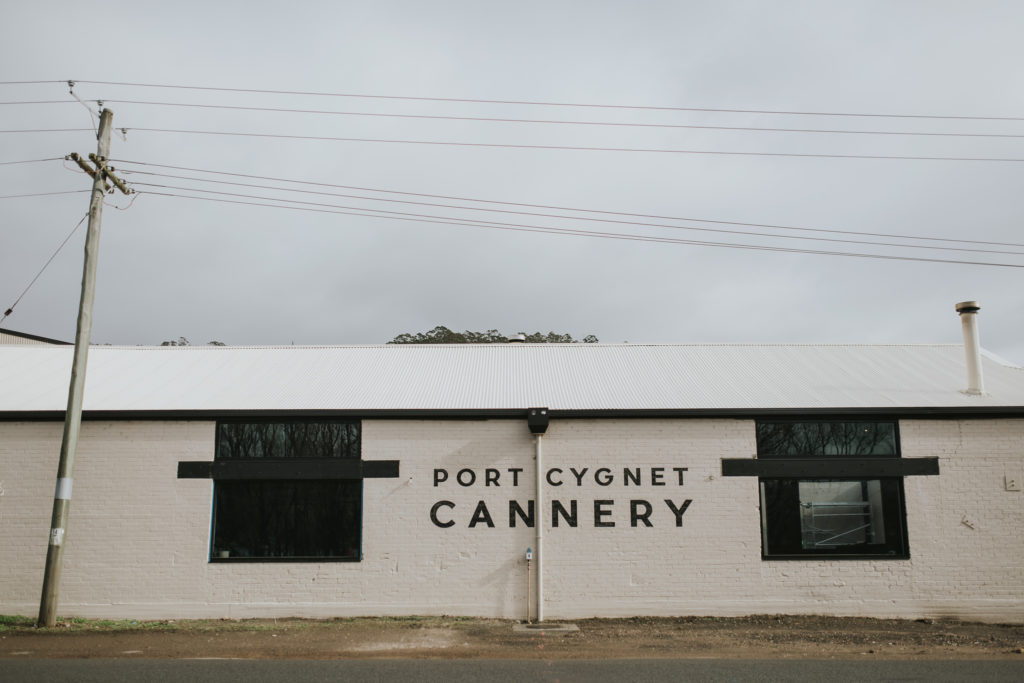
This workforce was diverted for the festival, where there would be competitions in making the most crates in the shortest time and in wrapping and packing apples. One year a choir of 500 children from Huonville sang at Cygnet Oval. Children also participated in athletic carnivals.
A 1952 report in the Australian Women’s Weekly said 1000 school children took part in displays that year.
There were floats to assemble and decorate, practice for tap-dancing demos and marching girl teams.
And before anyone thought of having a food truck as a business, huge teams of women would prepare, cook and serve food at canteens over the two days.
And the biggest event each year was the naming and crowning of the Apple Queen by a visiting celebrity or VIP.
In 1954, prime minister Sir Robert Menzies opened the festival and his wife Dame Pattie crowned Helen Page Queen of the Apples.
In 1957, Olympian Betty Cuthbert did a demo run on the oval before crowing Yvonne Barnes Apple Queen.
Aussie movie star Chips Rafferty was the big draw the year Di Clark won. He rode a horse around the oval and Di was crowned by his wife, referred to in the Mercury only as “Mrs Rafferty”.
Over the years, various governors, premiers and Misses Tasmania placed the crown on the queen’s head, handed her the mace and draped her in the red robe of office.
The special event in 1956 was the world’s largest apple pie, weighing a tonne. In Hobart, National Pies made 36 slabs of pie using 635kg of apples. These were patchworked together in Cygnet on a huge trailer and guarded overnight before the big day.
Ruth Hammond was the apple queen that year. In 2006, now Ruth Stewart, she told an ABC radio documentary Hindsight, that the pie was more of a slice, only a few centimetres thick, but she had to cut it with a knife that was nearly two metres long.
“So it would look as if the knife was going to this huge pie, there was a hole in the trailer so the knife could go through to ground,” she said.
Then the pie was cut and put into cardboard containers. School children handed every one of the 16,000 to 20,000 people on the ground a piece of pie and cream.
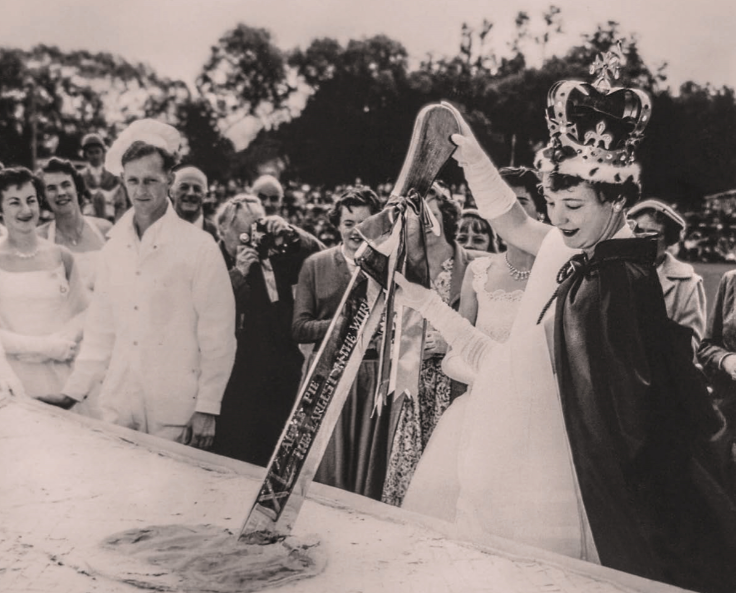
Part of the Apple Queen’s prize was a trip away, a sort of working holiday promoting the Huon Valley apple industry. Ruth Stewart went to Queensland, where the fame of the pie preceded her.
“They didn’t know much about the festival, but they did know about the world’s largest apple pie,” she said.
Di Clark, who lives in Lucaston, says she was “talked into entering the Apple Queen contest right at the last minute”.
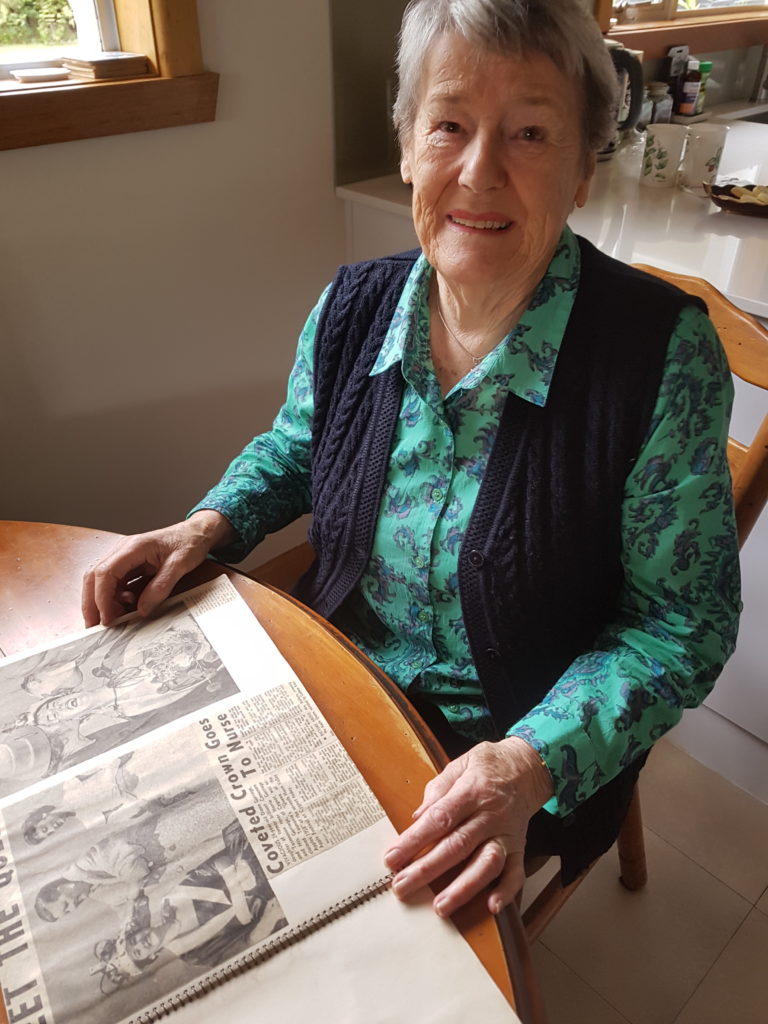
She and four other nursing sisters had just returned to the state after an 80-day trip around Australia in an FJ Holden, and there was no time to swot up on the apple industry. “But I knew it, because I grew up with it,” said Di.
“Where you see a paddock now, there would have been an apple orchard. From Grove store to Huonville was known as the Golden Mile, there were just orchards everywhere.”
A connection of some sort with the apple industry was a prerequisite for women aged between 18 and 28 to enter the contest.
The Apple Queen with the most direct connection to the industry was 1955 winner Nathalie Norris, who was 25 when she won the crown and had already been managing her aunt’s Franklin apple orchard for seven years.
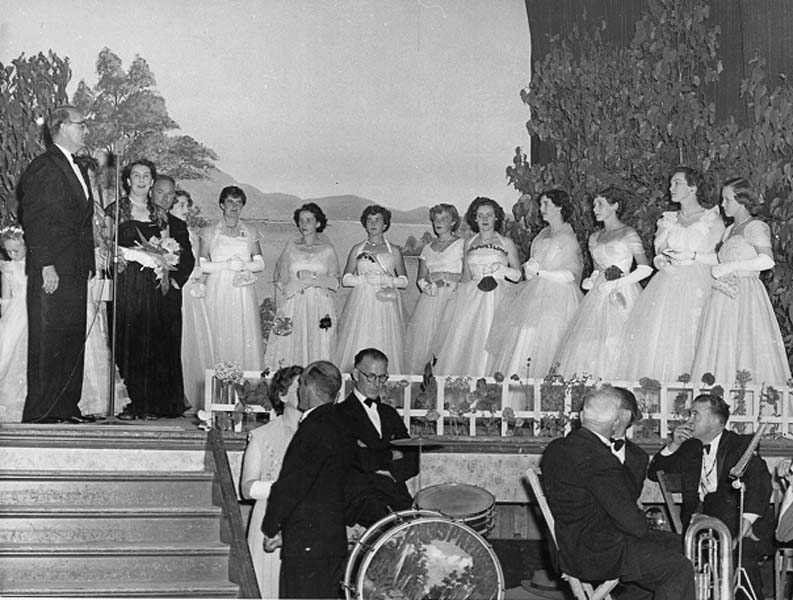
From her prize trip to Sunraysia and South Australia she brought back and implemented the ideas of planting the orchard with grass and lateral pruning.
When Nathalie, Di Clark and Ruth Stewart talked to Hindsight they agreed that selecting the Apple Queen was no casual affair – the winner would be an ambassadress for the Tasmanian apple industry on the mainland after all.
Between eight and 15 aspirants for the title would be interviewed by a panel of judges on the Friday. Further evaluation of the contestants’ “intelligence, confidence and poise” took place over lunch. Di says they were looking at “your table manners, how you dressed and how you spoke”.
On a Saturday night, there was a ball. Almost always the Apple Queen contestants wore white, but Di diverged from tradition and wore a strapless emerald satin dress with a white and green bolero – modeled on a gown she had seen on actor Elizabeth Taylor.
Di still has the dress, and it was on show (but not worn) at an Apple Queen Tribute dinner at Willie Smith’s in 2016.
Di remembers a shopping trip to Hobart to collect gifts of hats, shoes, bags “even china” donated by businesses to the Apple Queen. Then she was off with chaperone Mrs Madge Hansen to tour the Sydney Fruit Market, meet the Queensland Premier and Lord Mayor of Brisbane, appear on TV in the Country Hour and visit Newcastle dockyard, where she tossed apples down to 200 men constructing the first roll-on, roll-off ferry, the ‘Princess of Tasmania’.
The timing of the festival seems to have been critical to its success, but also to its demise. The buzz of harvest and having real apples for the packing competitions aided the event. One year there was a demonstration of arial top-dressing of an orchard next to the oval.
But not everyone was happy when the industry was brought to a standstill. Nathalie Norris recalled on the website Franklin Friends: “We were accused of not getting enough fruit picked and packed to send up to the boats at the time, because everyone was so busy with the Apple Festival – especially in Cygnet.”
There was no festival in 1963, and when Bronwen Nichols took the crown at the last festival in 1964, the event was not as grand. Her prize was a couple of days in Spreyton rather than the mainland tour of duty.
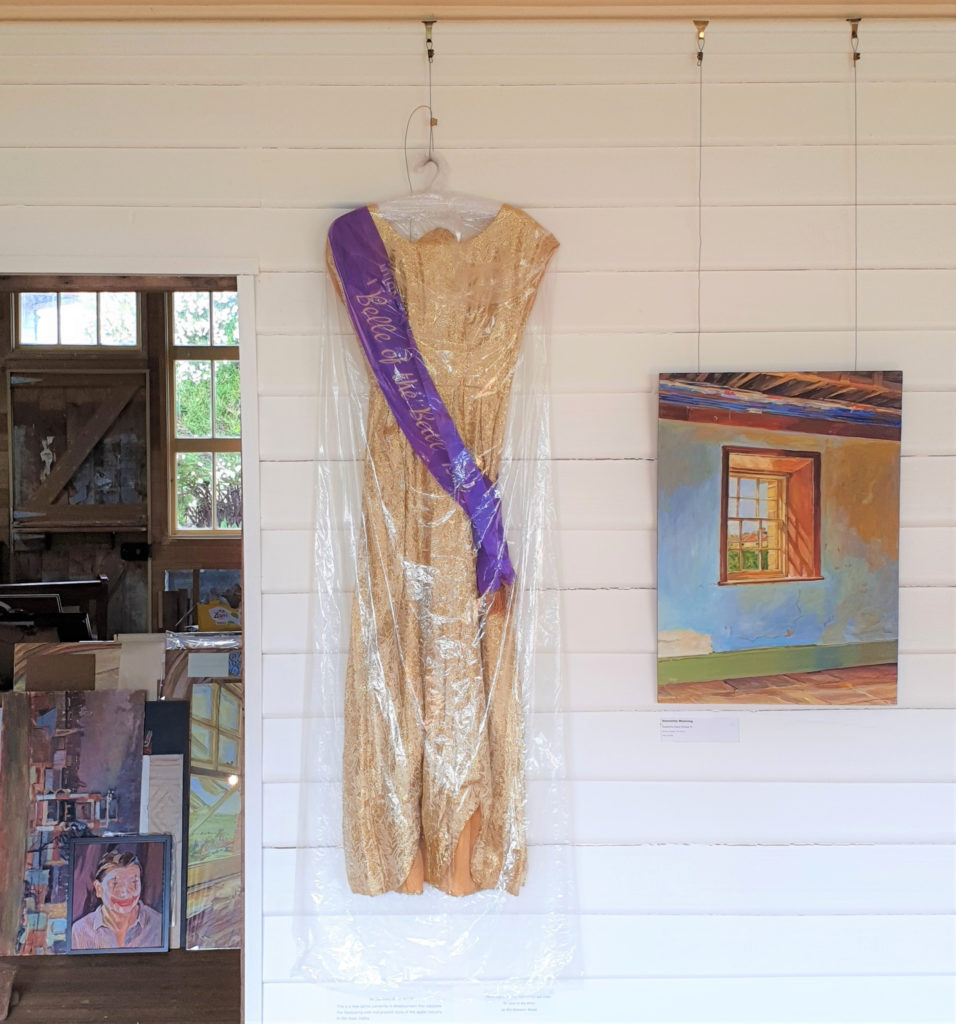
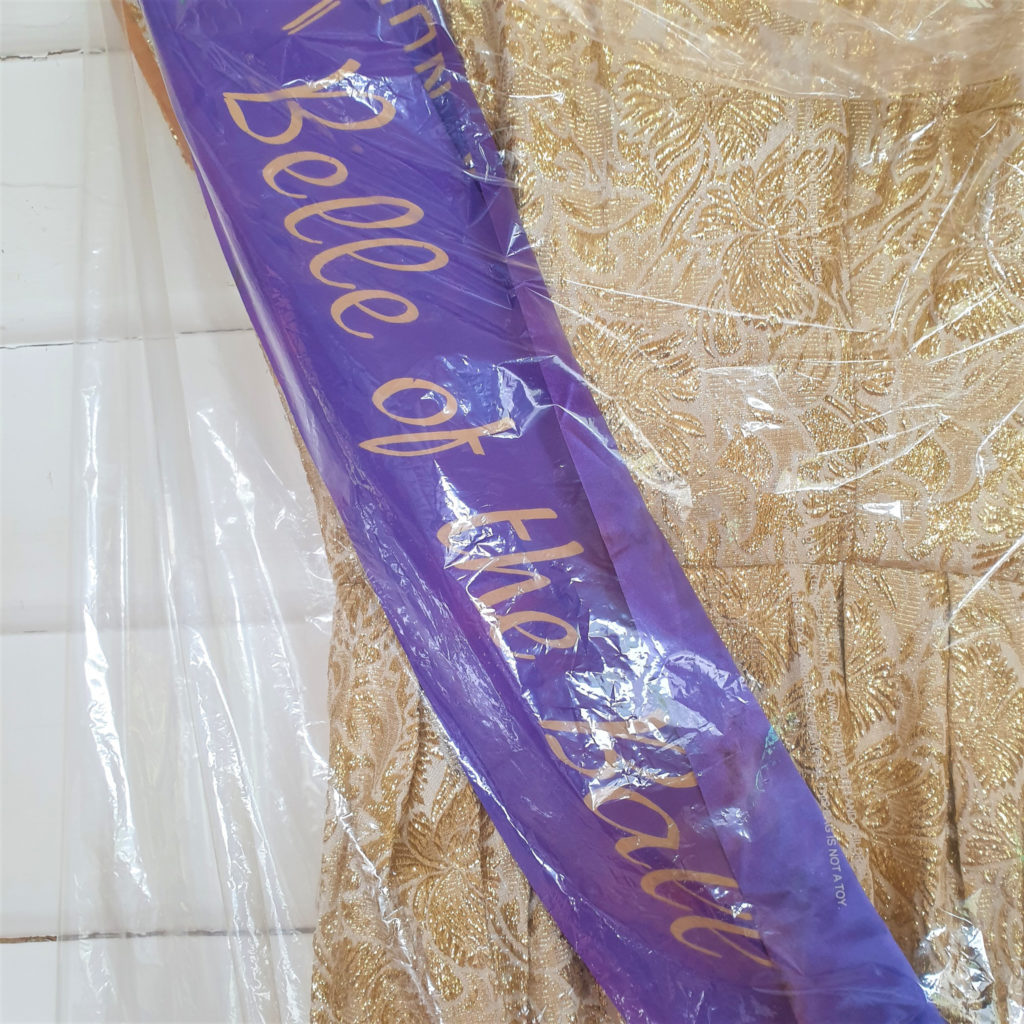
The gold lurex brocade gown she wore when named Belle of the Ball and Miss Festival (and announced her engagement to Robert Wedd) is now with Huon artist Henrietta Manning, who is incorporating many apple industry souvenirs into a series of paintings.
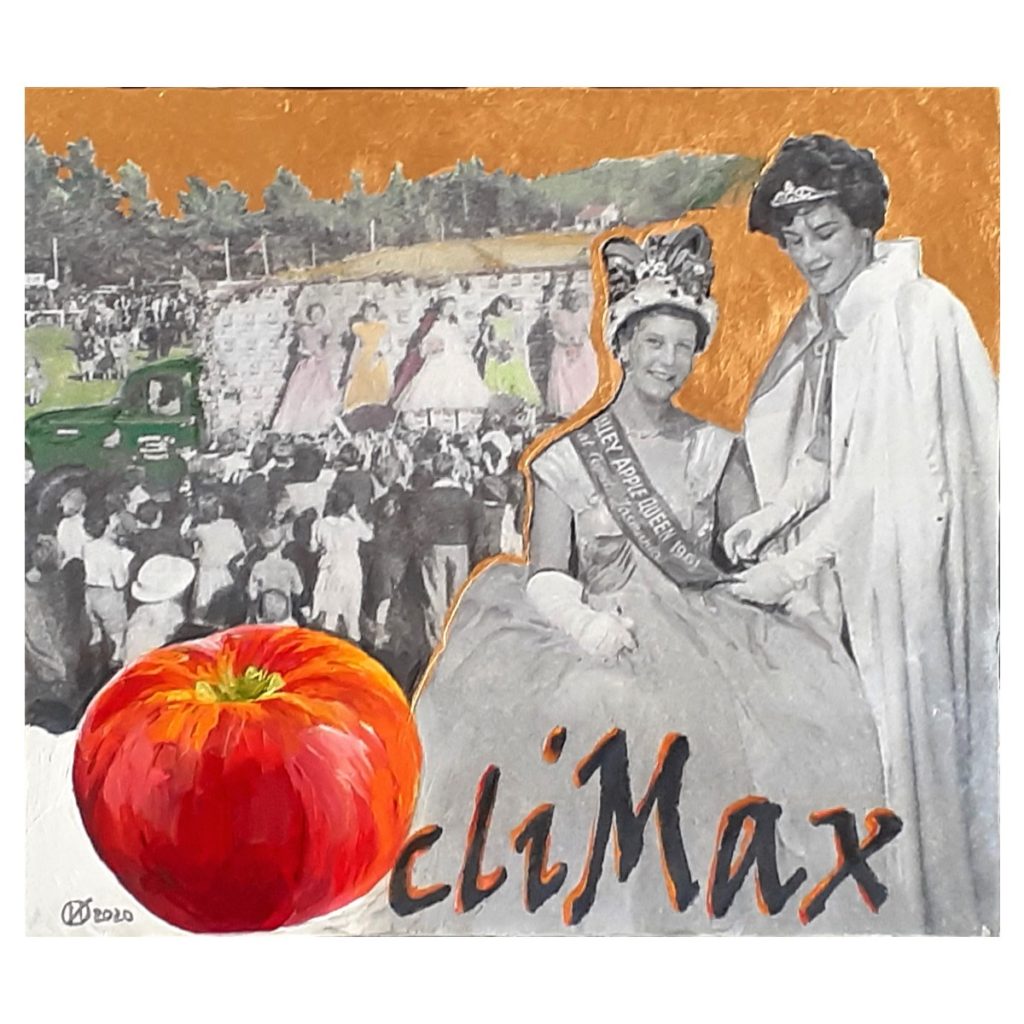
acrylic, gold metallic leaf on gessoed board, 26x30cm. Photo ref Tasmanian Libaries PH30/1/1312
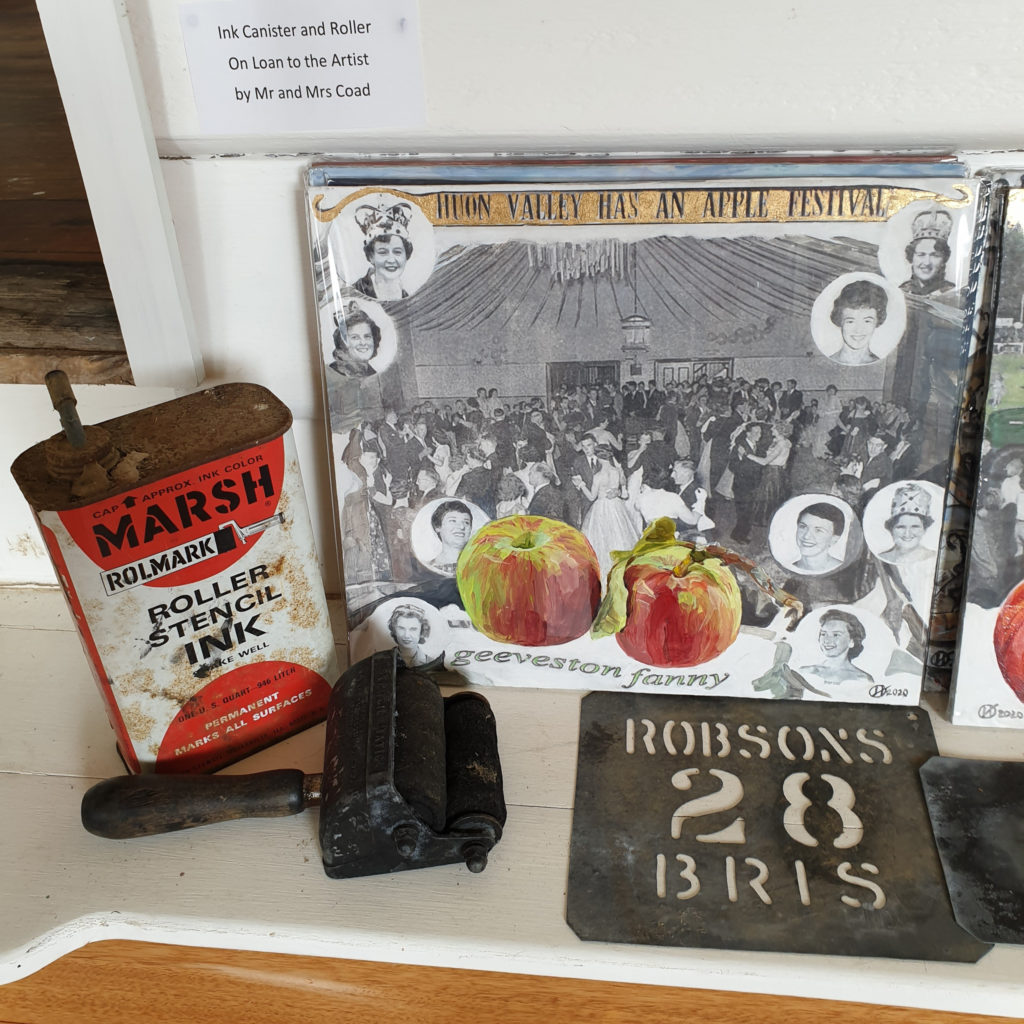
You can link to the Hindsight doco on the Huon Valley Apple Industry here.
At the Living History Museum in Cygnet, ask to see the Apple Festival scrapbook of news clippings put together by Carol Weist.
Queens of the Huon Valley Apple Festival
1952 Beverley Lovell
1953 Valda Woolley
1954 Helen Page
1955 Nathalie Norris
1956 Ruth Hammond
1957 Yvonne Barnes
1958 Diana Gorringe
1959 Judy Berling
1960 Judith Baker
1961 Lyn Ivey
1962 Pamela Smith
1963 no festival held
1964 Bronwen Nichols
Video Reference: Tasmanian Archives AB869/1/332 Film – Apple Festival
